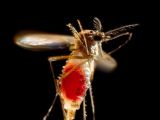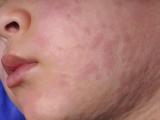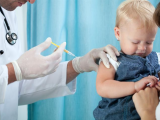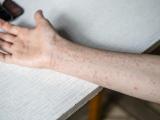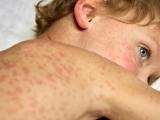Apr 7, 2011
Nigerian physicians hit by Lassa fever
A physician at a medical center in Nigeria recently died of Lassa fever, and two other physicians from the same center are being treated for the disease, the Nigerian Tribune reported today. The doctors, working at the Federal Medical Centre in Yola, Adamawa state, experienced symptoms of a viral hemorrhagic fever in early March after treating a patient, said Dr. Aliyu Danburam, chief medical director there. All three were referred to the Irrua Specialist Medical Centre for the Control of Tropical and Infectious Diseases, where the disease was confirmed. One of the patients died there, and the other two were still being treated, the story said. Because of the highly infectious nature of Lassa fever, the Nigerian health ministry's epidemiology unit set up a surveillance squad at the Yola medical center to screen all cases that could possibly be linked to the outbreak, Danburam reported. The story did not specify whether any other cases have been confirmed.
Dengue in Hawaii may have spread to Maui
Hawaii's health department is investigating two suspected dengue cases in East Maui, The Maui News reported today. Maui County officials said they were awaiting confirmation from the US Centers for Disease Control and Prevention and did not give details on the two patients or the specific area. The county has not seen any cases since late 2001 to spring 2002, when at least 20 people contracted the mosquito-borne disease, which leads to fever, severe headaches, a rash, and eye, joint, and muscle pain. Four locally acquired cases were recently confirmed on the island of Oahu. All of those patients have recovered.
Apr 7 Maui News story
Tests detect NDM-1 in New Delhi water
NDM-1, an enzyme that can make gram-negative bacteria resistant to many antibiotics, has been detected in drinking and seepage water in New Delhi, India, where the bacteria that produce the enzyme are thought to have originated. The findings appear today in an early online edition of Lancet Infectious Diseases. Isolates that contain NDM-1, which stands for New Delhi metallo-beta-lactamase 1, are thought to have first spread to the United Kingdom and other countries via people traveling to India for medical treatment. In the current study, researchers from Cardiff University in Wales collected drinking water samples and water from street pools or rivulets from sites around New Dehli from Sep 26 to Oct 10, 2010. They compared them with sewage effluent samples from Cardiff's waste water treatment system. Using polymerase chain reaction (PCR) and DNA testing, they detected the NDM-1 gene in 2 of 50 drinking water samples and 51 of 171 seepage samples. They didn't find it in any Cardiff water samples. They cultured bacteria containing NDM-1 from 2 water samples and 12 seepage samples, including 11 species that had not been linked to NDM-1 before. The researchers said the findings have public health implications for the New Delhi population and establish the importance of environmental NDM-1 sampling in international surveillance activities.
Apr 7 Lancet Infect Dis abstract
Apr 6 EurekAlert press release
CDC tracks measles spike in young travelers
The US Centers for Disease Control and Prevention (CDC) said today that it has already received seven reports of imported measles in infants and young toddlers who traveled overseas, which prompted a reminder for parents to have their children immunized with measles, mumps, and rubella (MMR) vaccine before taking overseas trips. The description of the seven cases, which appeared today in Morbidity and Mortality Weekly Report (MMWR), also notes that four of the children ages 6 months to 23 months were hospitalized, and in some instances the diagnosis was delayed or made after the child recovered. None of the children had been vaccinated, though all were eligible to receive it. Although the MMR vaccine usually isn't routinely given until children are 12 months old, experts recommend that children ages 6 to 11 months who will travel abroad should receive one dose, with a two-dose follow-up scheduled after their first birthday. In its review of measles data from 2001 to 2010, the CDC said it typically receives reports of three to seven imported measles cases each year in young children. The CDC said the cases highlight the importance of clinicians reviewing vaccination history in those who will be traveling abroad and considering measles when patients with a recent travel history outside the United States have a febrile rash illness.
Apr 8 MMWR report
Listeriosis cluster linked to hog head cheese
Public health officials from the CDC and Louisiana today reported the first listeriosis outbreak linked to hog head cheese, according to findings described in MMWR. During the first half of 2010, the Louisiana Office of Public Health detected a cluster of 14 invasive listeriosis cases, 8 of which were the same serotype and had the same genetic fingerprint. An epidemiologic investigation focusing on 4 patients revealed that 3 had eaten hog head cheese, a ready-to-eat meat jelly made from swine heads and feet. The probe also found that they had bought the single brand at two different grocery stores. Laboratory officials cultured the outbreak strain from unopened product samples. Environmental samples obtained from the producer were also positive for the outbreak strain, which led investigators to suggest that persistent contamination at the plant was the source of the illnesses. The investigators said that a standardized questionnaire specific for Listeria monocytogenes helped identify an uncommon food that was common among the patients. They also added that the outbreak wasn't surprising, given that hog head cheese fits the profile of a ready-to-eat deli meat that poses known risks, especially to older people, pregnant woman, and those with chronic health conditions.
Apr 8 MMWR report
Quebec E coli death may be linked to recalled walnuts
Quebec's health ministry said today that a providence resident has died from an Escherichia coli infection that may be related to other illnesses with links to walnuts, the Canadian Broadcasting Corporation (CBC) reported. A health ministry spokesperson said the patient had underlying medical conditions but released no other details. So far the E coli O157:H7 outbreak has sickened 13 Canadians, including 9 from Quebec, according to an earlier report from the Public Health Agency of Canada. The illnesses prompted a recall of packaged and bulk walnuts distributed by Amira Enterprises, Inc, based in Quebec. The walnuts were imported from the United States, according to a recall advisory from the Canadian Food Inspection Agency.
Apr 7 CBC story
Web-based surveillance system panned for pandemic H1N1
A Web-based surveillance system designed by Johns Hopkins and Department of Defense researchers gathered solid data but was not useful for detecting or monitoring pandemic 2009 H1N1 influenza, according to an assessment in Morbidity and Mortality Weekly Report (MMWR) today. Researchers from the Centers for Disease Control and Prevention said the Electronic Surveillance System for the Early Notification of Community-Based Epidemics (ESSENCE) version 2 "demonstrated strengths in data quality, flexibility, and representativeness" but resulted in a 1- to 3-day delay in tracking illness, lacked sensitivity (reported as 71.4%), and had only a 31.8% predictive value positive (PVP) rating for identifying influenza-like illness (ILI). The authors said the system did not detect the outbreak soon enough to slow its spread. They suggest: "More frequent Internet data transmissions from the clinics to the ESSENCE server could improve timeliness, and PVP could be enhanced by including measured body temperature in the ESSENCE ILI case definition."
Apr 8 MMWR report
